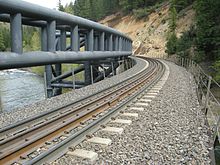Hey guys, so I saw the news and heard about the Amtrak accident that happened the other day (r.i.p to those who died), and it got me to thinking, what if there was a system of powered wheels placed at the curve of the derailment? Sounds confusing but what I mean is a system of wheels placed at a curve designed to prevent the train from *completely* rolling over in the case of a derailment. These said wheels would gradually slow the train down as it rubbed against them. (rolling counter clockwise to the direction of the train at maybe 20mph?) Catch my drift? Now how this would support the weight of the train, I'm not entirely sure (I'm sure a good bit of heavy duty fabrication would be involved to hold everything in place though) but as far what material the wheels would be made out of, I think rubber would be a nice idea. (feel free to chime in if you have better alternatives). Something that wouldn't be too abrasive on the train cars.
This system would extended at least a 1/4 mile after said curve so hopefully it would create a chain reaction of the train gradually being pushed back on the tracks.
If you need me to be more specific about something, please feel free to say so. Also, lets not be rude because I seriously think this would be a nice idea to try and implement. It might sound stupid/weird/etc but it might prevent something like this from happening again.
Thanks!
This system would extended at least a 1/4 mile after said curve so hopefully it would create a chain reaction of the train gradually being pushed back on the tracks.
If you need me to be more specific about something, please feel free to say so. Also, lets not be rude because I seriously think this would be a nice idea to try and implement. It might sound stupid/weird/etc but it might prevent something like this from happening again.
Thanks!
